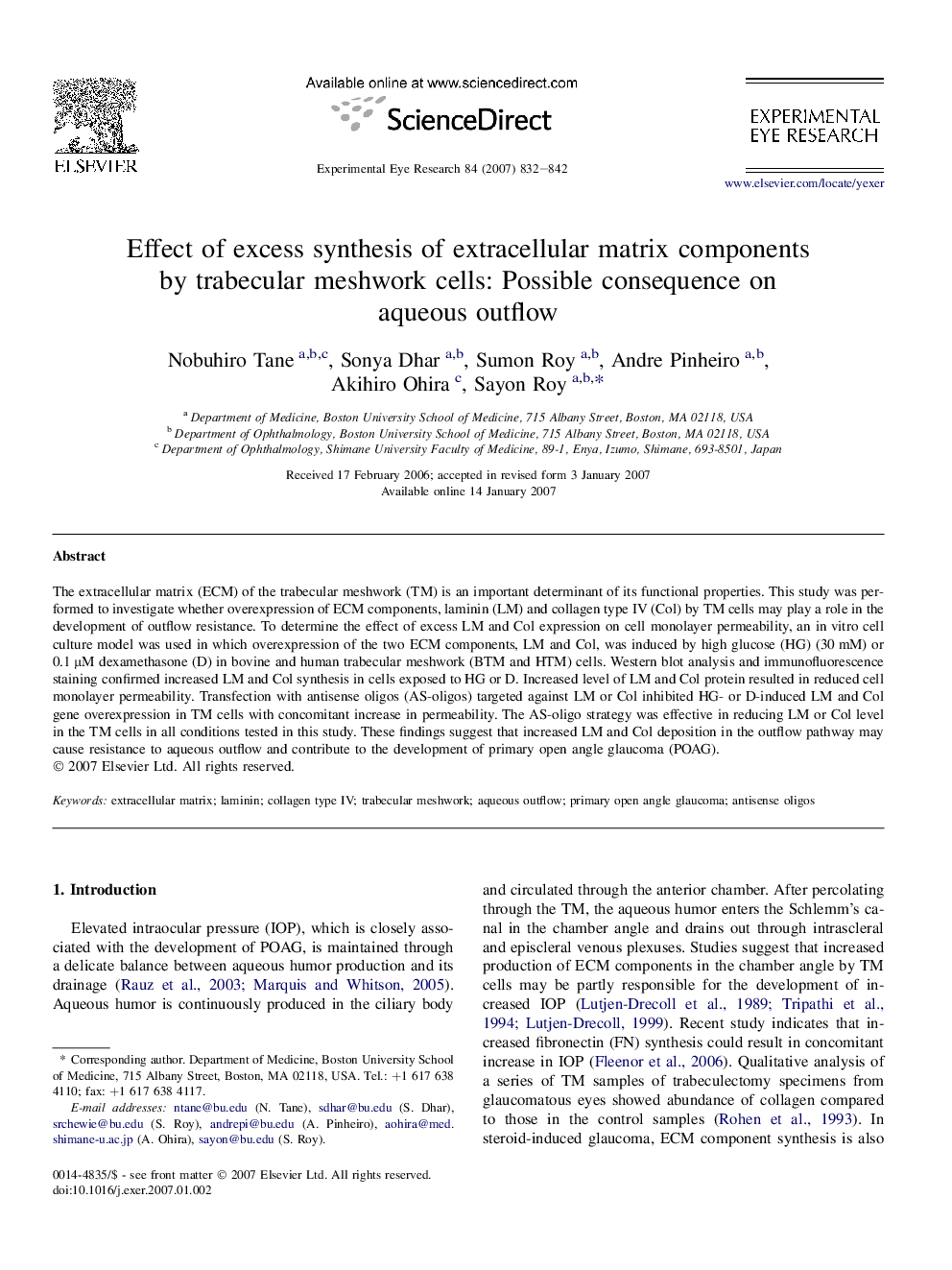| کد مقاله | کد نشریه | سال انتشار | مقاله انگلیسی | نسخه تمام متن |
|---|---|---|---|---|
| 4012901 | 1261219 | 2007 | 11 صفحه PDF | دانلود رایگان |

The extracellular matrix (ECM) of the trabecular meshwork (TM) is an important determinant of its functional properties. This study was performed to investigate whether overexpression of ECM components, laminin (LM) and collagen type IV (Col) by TM cells may play a role in the development of outflow resistance. To determine the effect of excess LM and Col expression on cell monolayer permeability, an in vitro cell culture model was used in which overexpression of the two ECM components, LM and Col, was induced by high glucose (HG) (30 mM) or 0.1 μM dexamethasone (D) in bovine and human trabecular meshwork (BTM and HTM) cells. Western blot analysis and immunofluorescence staining confirmed increased LM and Col synthesis in cells exposed to HG or D. Increased level of LM and Col protein resulted in reduced cell monolayer permeability. Transfection with antisense oligos (AS-oligos) targeted against LM or Col inhibited HG- or D-induced LM and Col gene overexpression in TM cells with concomitant increase in permeability. The AS-oligo strategy was effective in reducing LM or Col level in the TM cells in all conditions tested in this study. These findings suggest that increased LM and Col deposition in the outflow pathway may cause resistance to aqueous outflow and contribute to the development of primary open angle glaucoma (POAG).
Journal: Experimental Eye Research - Volume 84, Issue 5, May 2007, Pages 832–842